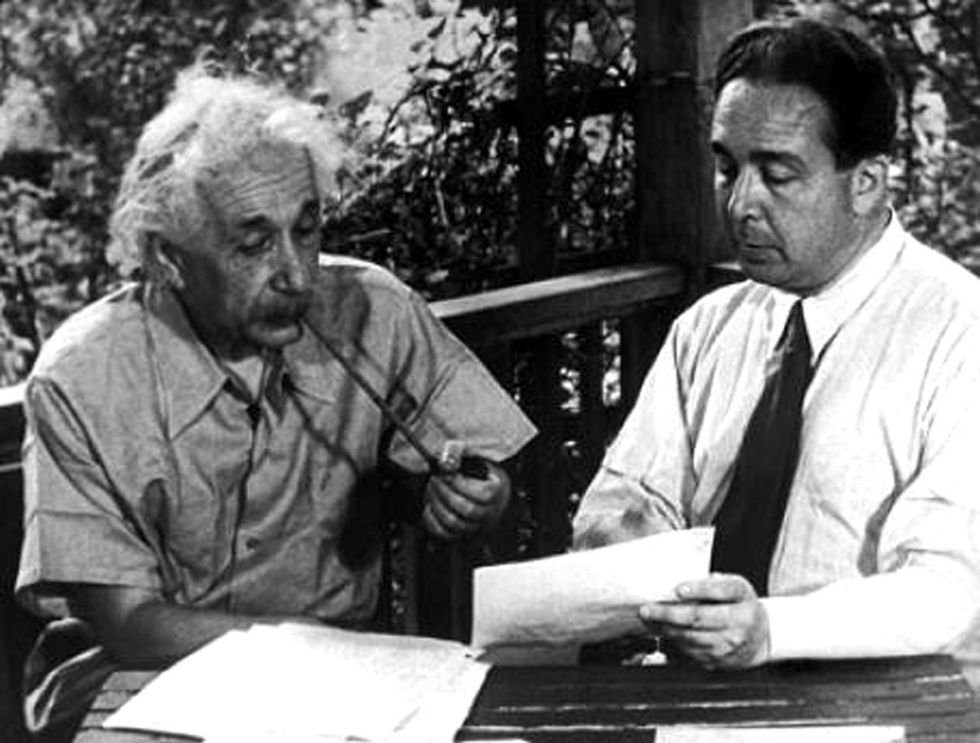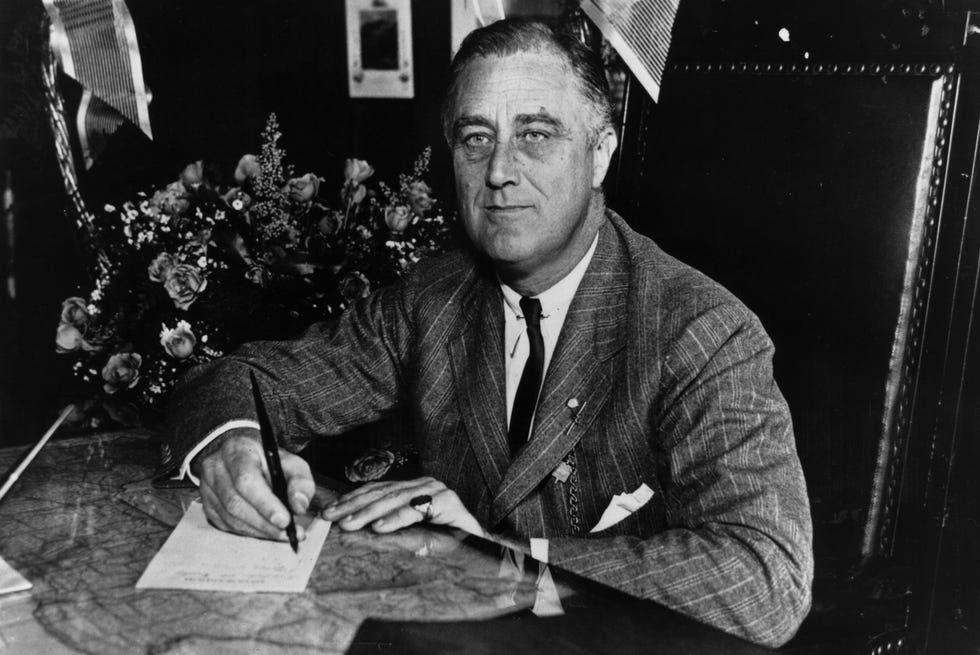One of the most influential scientists of the 20th century, Albert Einstein is well-known for developing the theory of relativity, as well as his other important contributions to quantum mechanics and physics. But shortly before to his death in 1955, Einstein reflected on his life and identified his single greatest regret: his role in the development of the atomic bomb.
Although acquainted with physicist J. Robert Oppenheimer, Einstein never worked on the Manhattan Project that led to the development of nuclear weapons, nor was he aware of plans to drop the bombs at Hiroshima and Nagasaki. But Einstein and his colleague Leo Szilard played a crucial role in encouraging President Franklin D. Roosevelt to pursue the bomb in the first place.
A Startling Visit from a Friend
It all started with a visit by Szilard, a Hungarian-German physicist who previously studied with Einstein in the 1920s. Their research led to the creation of a refrigerator pump that required no moving parts, resulting in what is most commonly called the Einstein refrigerator, according to Genius in the Shadows, a Szilard biography by William Lanouette.
After their collaboration, Szilard conceived the idea of a nuclear “chain reaction” while working in London in 1933. The next year, he convinced the British government to make his chain reaction patent a military secret, according to Lanouette, successfully forestalling a nuclear arms race with Adolf Hitler, who by then was the Chancellor of Germany.
However, after scientists in Germany experimentally split the uranium atom in 1938, Szilard became deeply concerned about idea of Hitler obtaining an atomic bomb first and began raising alarm bells among his personal connections. In Lanouette’s words, he “worked frantically to start the very arms race he had feared.”
In 1939, Szilard visited his old friend Einstein, stunning the fellow physicist by describing the nuclear chain reaction concept. “I haven’t thought of that at all,” Einstein admitted, according to Lanouette. Einstein immediately agreed to warn his friends in the Belgian Royal Family that Nazi Germany might have eyes on the Belgian Congo, which contained the world’s largest uranium supply.
But after that initial meeting, Szilard became convinced that U.S. officials should be warned about Germany’s intentions as well. Szilard and Einstein met for a second time three weeks later, discussing how to get word to President Roosevelt and starting work on one of the most impactful and historic letters in the 20th century.
The Einstein-Szilard Letter
Through friends, Szilard met with Alexander Sachs, a Wall Street banker with access to the White House. Sachs said he had already spoken with Roosevelt about uranium but that the government decided not to pursue uranium research because Columbia University physicists had told them the prospects of an atomic bomb were minimal, according to The New World 1939/1946: A History of the United States Atomic Energy Commission.
Sachs felt Roosevelt might be persuaded by someone of Einstein’s reputation, according to the book. Einstein—who was also encouraged by Hungarian physicists, including refugees Eugene Wigner and Edward Teller—sent a letter dated August 2, 1939, urging Roosevelt about the possibility that Nazi Germany could develop an atomic bomb.
“In the course of the last four months it has been made probable… that it may become possible to set up a nuclear chain reaction in a large mass of uranium by which vast amounts of power and large quantities of new radium-like elements would be generated,” the letter read. “Now it appears almost certain that this could be achieved in the immediate future.”
Warning that this phenomenon could also lead to the construction of particularly devastating bombs, Einstein encouraged Roosevelt to consider a similar program in the United States and urged him to make contact with physicists working on chain reactions in the United States, according to the letter.
Preoccupied with events in Europe, Roosevelt didn’t respond for nearly two months, making the physicists fear he wasn’t taking the threat of nuclear warfare seriously, according to the U.S. Department of Energy. On the contrary, however, Roosevelt felt Hitler achieving unilateral possession of such powerful bombs would pose a grave risk to the nation.
The Letter Spurs Action
Roosevelt wrote back to Einstein on October 19, 1939, informing him about the establishment of a committee of civilian and military representatives to study uranium, according to the Energy Department. Although this was only the first of many such steps and decisions along the way, this committee was ultimately the catalyst for the Manhattan Project.
In 1940, Einstein sent Roosevelt two more letters on March 7 and April 25, recommending additional work on nuclear research, according to An Einstein Encyclopedia by Alice Calaprice and others. He wrote again on March 25, 1945, expressing his growing fears about the possible misuse of uranium, but it wasn’t delivered before Roosevelt’s death a little more than two weeks later.
The more famous 1939 letter, however, came to be known as the Einstein-Szilard letter and is widely considered to be the key stimulus for the United States developing the atomic bomb, according to Lanouette.
Einstein never worked on the Manhattan Project and had no prior knowledge of plans to use the atomic bombings at Hiroshima and Nagasaki in 1945. A pacifist who despised war, Einstein came to deeply regret his role in the development of the bomb, later saying: “Had I known that the Germans would not succeed in developing an atomic bomb, I would have done nothing.”
Einstein harbored these regrets for this rest of his life. In 1954, one year before his death, Einstein discussed the matter in a letter to his friend, chemist Linus Pauling. Although he cited the fear of Germany developing a bomb as a partial justification, he nevertheless described his letter to Roosevelt as the “one great mistake in my life.”
Senior News Editor, Biography.com
Colin McEvoy joined the Biography.com staff in 2023, and before that had spent 16 years as a journalist, writer, and communications professional. He is the author of two true crime books: Love Me or Else and Fatal Jealousy. He is also an avid film buff, reader, and lover of great stories.


